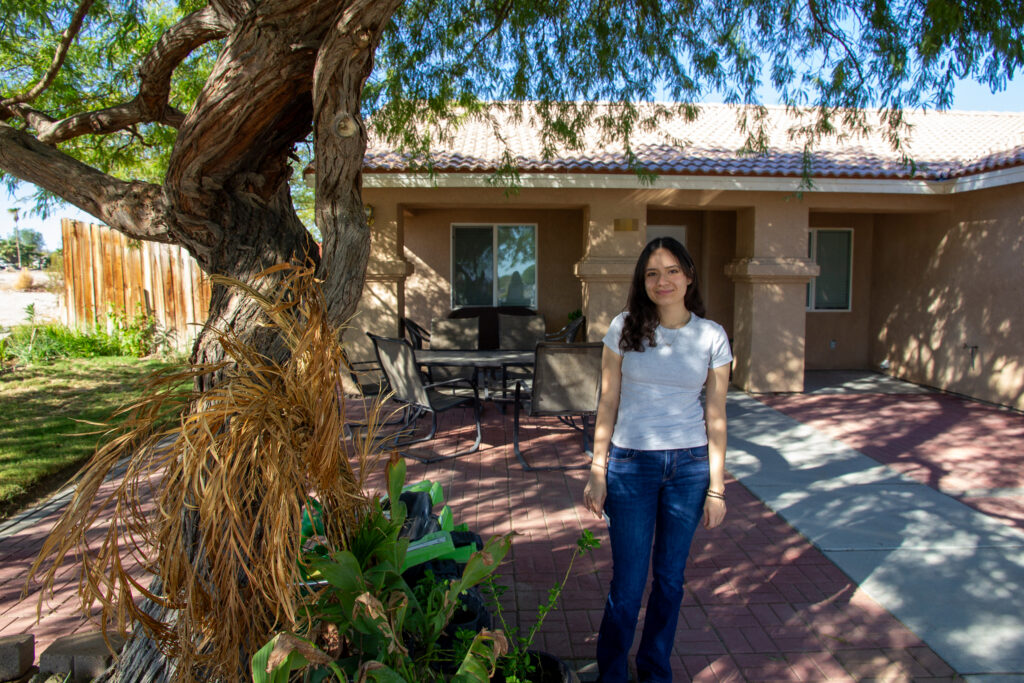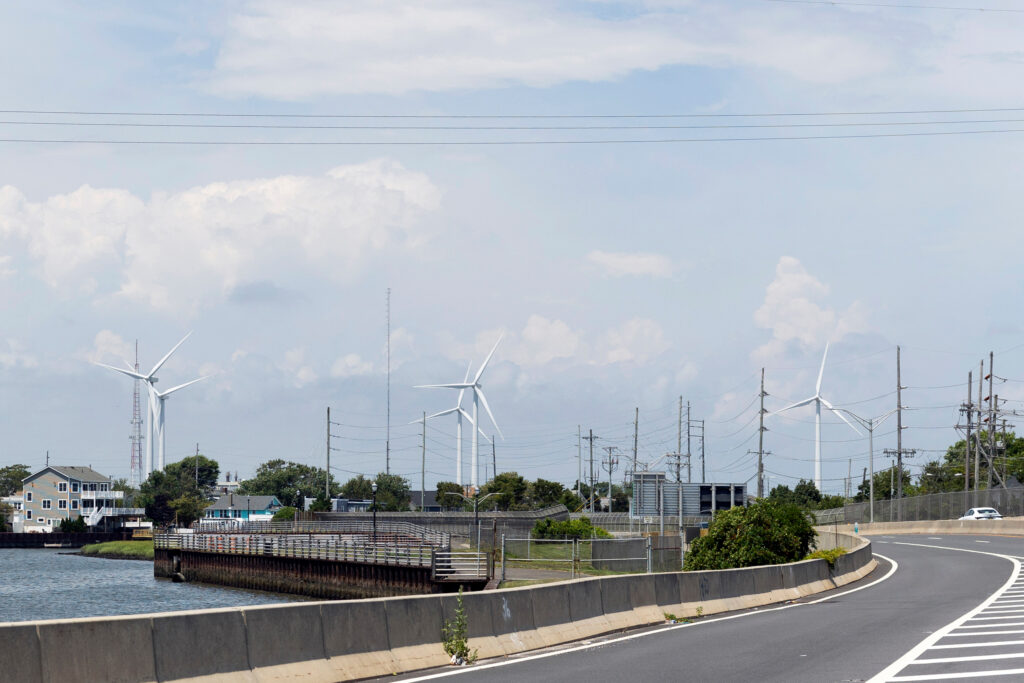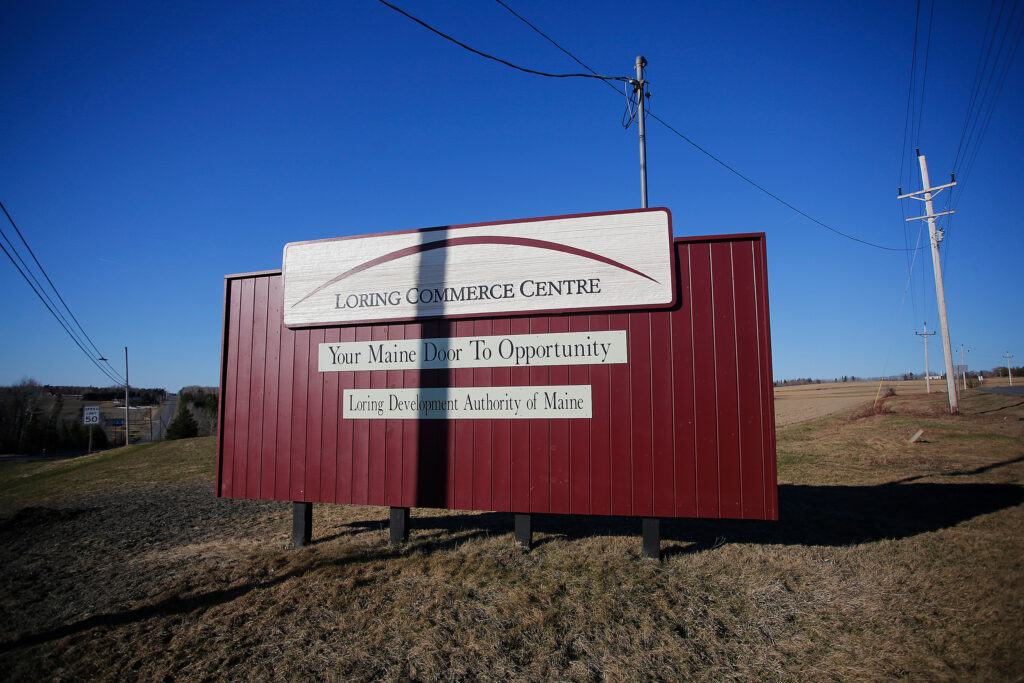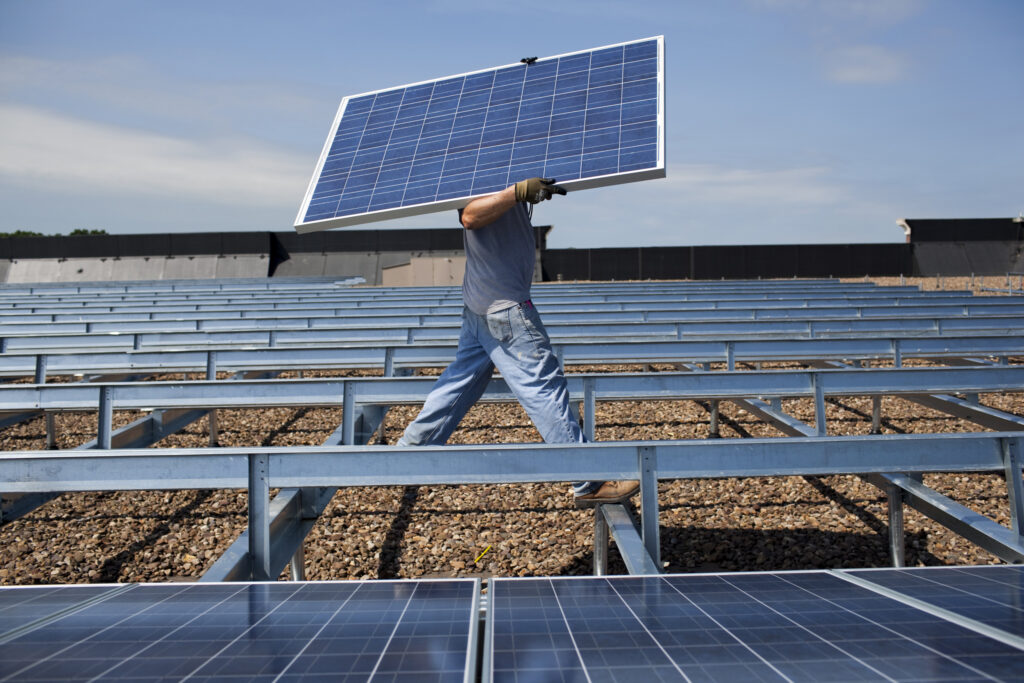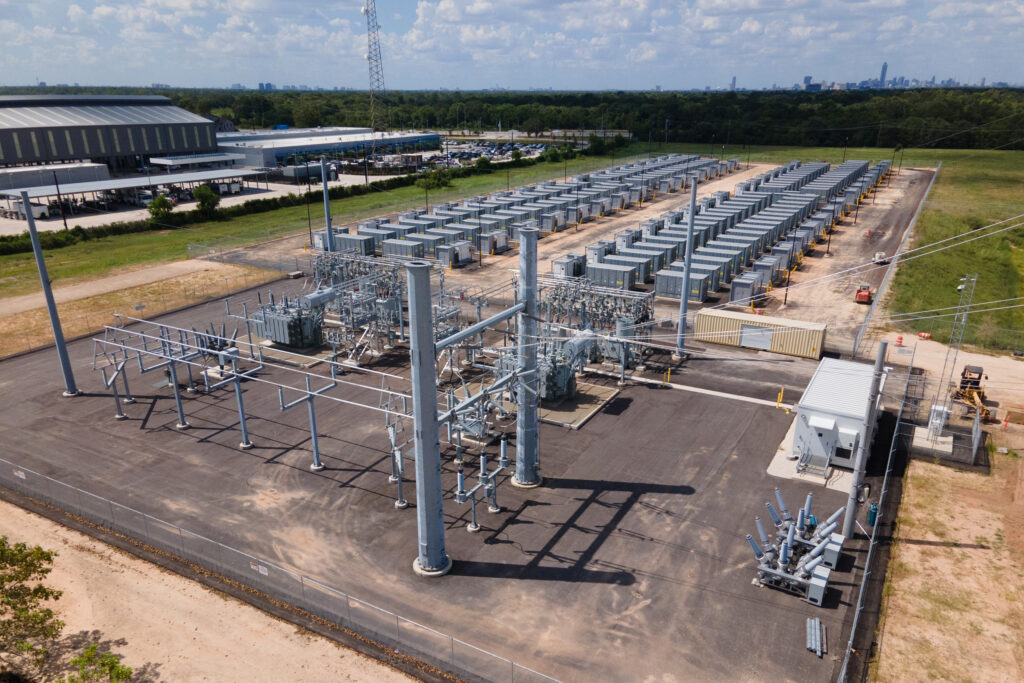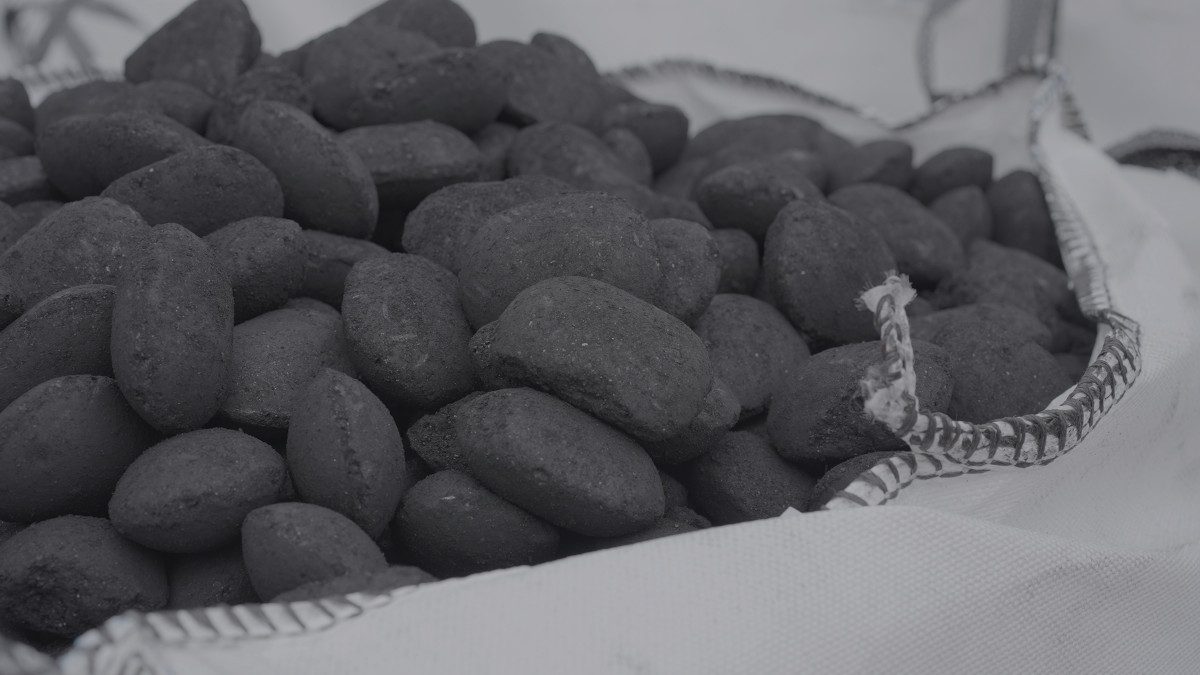Beysi Vazquez tends to thousands of basil, dill, mint and other herbs in a large sprawling nursery business in California’s Coachella Valley, just north of the Salton Sea. She works long shifts, in one of the hottest parts of the state, where temperatures regularly top 100 degrees Fahrenheit and greenhouse temperatures can soar to 120 degrees.
“If I couldn’t go home to a cool house,” said Vasquez in Spanish. “I’m not sure I would have the energy to go to work the next day.”
Her husband is also a farmworker, and they typically run air conditioning at home from April to October, keeping it on low even when away because of the unrelenting sun in the valley. Vasquez said her friends and neighbors all work extra hours on farms and in nurseries to cover electricity bills that can reach $600 a month.
Vasquez didn’t know what to expect when her husband applied last year to have their home retrofitted through the Low-Income Weatherization Program (LIWP) Farmworker Housing Component.
She was pleasantly surprised when a local contractor inspected their four-bedroom home and the state-funded program offered a package of home improvements: free solar panels, two heat pumps that power an HVAC system and a water heater, and an electric stove. The contractors installed the equipment and also weatherized the home to help keep cool air in and block toxic dust that blows in from the dry banks of the Salton Sea.
In total, their stucco house benefited from about $30,000 worth of renovations. Since then Vasquez said, the energy bills have fallen by half.
The LIWP has been a godsend for some farmworkers—2,000 have benefited so far—and advocates for the community want the program expanded. Marco Lizarraga, the executive director of the support organization La Cooperativa Campesina de California, said the state program, allocated $20 million last year, is now crucial as federal funds to provide such help are diminishing under the Trump administration’s rollback of clean energy and climate mitigation programs.
He and other community advocates want more funds for the LIWP and are waiting to hear whether the program will be boosted with funds from a $10 billion climate bond approved by voters last year. “It’s urgent for the State of California to provide resources for environmental measures that are needed now,” Lizarraga said.
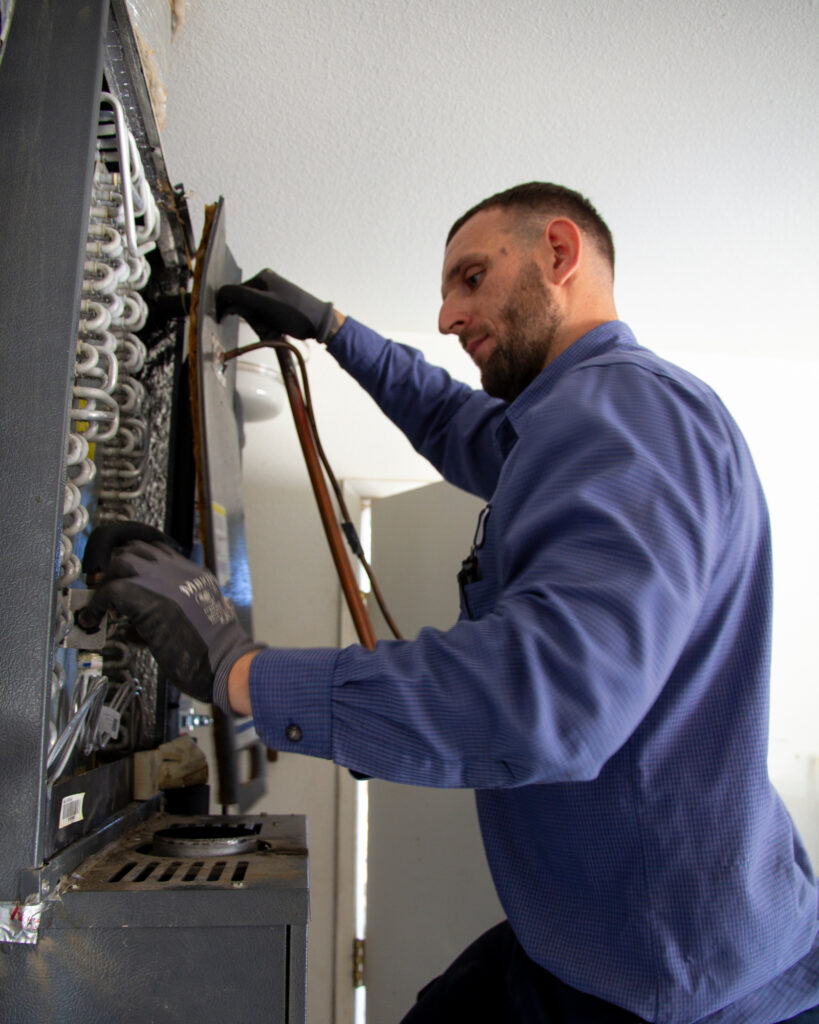
Lizarraga, whose organization administers the program, wants $10 million from the state’s climate bond to be added to the LIWP farmworker budget, and estimates 600 more homeowners could be helped by that infusion.
Farmworkers in California are at risk of heat-related illnesses, including kidney disease, and injuries due to exhaustion and an inability to concentrate. Their access to air conditioning at home is also inconsistent. Many low-income farmworker families live in homes with large swamp coolers, which are cheaper but do not filter dust and wildfire smoke out of the home.
Lizarraga said an estimated 18 percent of California’s 500,000 to 800,000 farmworkers own homes and could benefit from energy upgrades. He began advocating for homeowners nearly a decade ago to boost the savings of the workforce, critical to California and the U.S. agriculture, and to combat climate change.
“I said, ‘we’re going to lower the carbon footprint while at the same time we’re going to increase [farmworker families’] disposable income,’” Lizarraga said.
The program is part of the California Climate Investments program, which fines emitters and directs that money to climate resilience programs. The LIWP farmworkers program began in two counties in 2019. Since then it has expanded to 18 of the 58 counties in the state.
“Low-income families, and farmworker households in particular, pay a disproportionate amount of their annual income on home energy and often cut back on other necessities to pay their energy bills,” said Rob McAndrews, deputy director for legislative and public affairs of the California Department of Community Services and Development.
By focusing on farmworkers, McAndrews said, the program “helps ensure that members of this disadvantaged community can benefit from the state’s climate investments.”
To apply for state funds, recipients must own a home and not earn above a certain threshold–$49,000 for a couple, $62,000 a year for a family of four. But often their homes are so old or worn that some fixes are out of reach, even with state funds.
“We’re talking about poor people, so sometimes their homes are not up to code, and there’s not enough money [available] to be able to fix the roofs. And because of that, we can’t install solar panels. That happens quite often,” Lizarraga said.
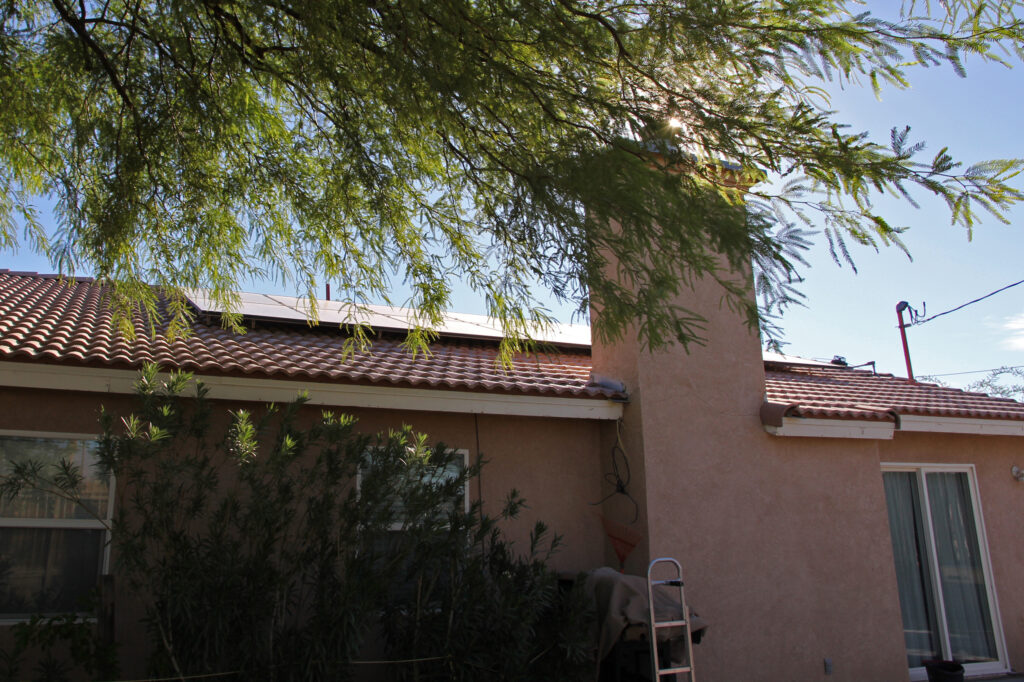

Luckily, Vazquez’s home had a stable roof. Workers from John Harrison Contracting could move quickly to install solar panels—and it was a timely fix. The day in October when the contractors arrived, the temperature reached 92 degrees Fahrenheit.
Mauricio Blanco, principal of Maroma Energy Services, the company that works on the ground to execute the program with La Cooperative, observed the renovations and described how he pitches the program to homeowners.
“I get to go into their homes and explain to them what the whole process is, and why it’s important for them to apply,” Blanco said. “Often, they’ll have an AC that’s about 15 or 20 years old, so I’ll let them know the refrigerant is no longer available in California. [I’ll say] ‘When it goes out, you’re going to be stuck buying a whole new system. Why not use this program and save money on your bills right away.’”
This story is funded by readers like you.
Our nonprofit newsroom provides award-winning climate coverage free of charge and advertising. We rely on donations from readers like you to keep going. Please donate now to support our work.
Donate Now
There is a learning curve for recipients, he said. One challenge with adding energy-efficient air conditioning, he said, is many recipients tend to use it more—at least at first.
“We do as much energy education as we possibly can, but the typical behavior is, “Oh, gosh, they just gave me a brand-new, super-efficient appliance, and I can use it,” Blanco said. His company is working with the utility provider in the region to add metering devices to homes so customers can see real time usage data. Then they can gauge how much to use the new HVAC systems—especially during high-demand evening hours.
The program so far hasn’t covered the cost of solar batteries, which would allow recipients to store energy from sunlight hours for use in the evening. Blanco said the additional $10 million would cover batteries. “Participants will be able to run their appliances and their home with the backup [energy], and they’ll essentially be off the grid unless absolutely necessary,” he said.
Gerardo Zaragoza is a contractor for John Harrison Contracting and grew up in a family of farmworkers. He often drives for hundreds of miles a day across Imperial and Riverside counties, in California’s far southeast quadrant, to inform farmworkers about the program.
Before the Trump administration ramped up raids on work sites, Zaragoza said he would pull off the road whenever he saw crews of workers picking crops like dates, lemons and grapes to hand out flyers about energy-saving possibilities for their homes. When site supervisors agreed, he would answer quick questions.
Even then, it was a struggle to convince farmworkers that an offer for free solar panels wasn’t a scam, he said, in part because fraudulent solar salespeople have been common in many parts of rural California. “They’ll hear it from somebody else, from a friend or a relative [who says] ‘Oh no, eventually they’re going to charge you,’” Zaragoza said. Once it’s clear that the program is legitimate, he said, word tends to travel.
In the last nine months, as U.S. Immigration and Customs Enforcement raids have spread, many farmworkers have stopped showing up to job sites. Zaragoza said finding potential recipients has become a challenge.
Blanco said La Cooperative Campesina de California, which also helps farmworkers secure education, employment and disaster support, has been a key part of the outreach. “We target those customers that have already received assistance, people who already trust La Cooperativa,” he said.
The threat of ICE raids isn’t the only impact of Trump administration policies on the LWIP farmworker program.
McAndrews from the state’s department of community services and development said the supply chain of energy efficient material—including solar panels—has been affected by trade tariffs and clawbacks of renewable energy funds from the Biden years. “The supply chain impacts of federal trade policies are just beginning to be felt, and threaten to reduce the number of households LIWP can serve,” McAndrews said.
For Vasquez, having a new system that uses less energy to cool the rooms better has been life changing. And she hopes that the program can continue to reach the people who labor in the hot sun to put food on Americans’ plates.
“I really appreciate the fact that they came and measured everything out,” she said of the contractors. “They realized that our old AC wasn’t cooling enough for the house, but now it has the capacity that is needed. The home is a lot cooler.”
This story was produced with support from the Climate Equity Reporting Project at Berkeley Journalism.
About This Story
Perhaps you noticed: This story, like all the news we publish, is free to read. That’s because Inside Climate News is a 501c3 nonprofit organization. We do not charge a subscription fee, lock our news behind a paywall, or clutter our website with ads. We make our news on climate and the environment freely available to you and anyone who wants it.
That’s not all. We also share our news for free with scores of other media organizations around the country. Many of them can’t afford to do environmental journalism of their own. We’ve built bureaus from coast to coast to report local stories, collaborate with local newsrooms and co-publish articles so that this vital work is shared as widely as possible.
Two of us launched ICN in 2007. Six years later we earned a Pulitzer Prize for National Reporting, and now we run the oldest and largest dedicated climate newsroom in the nation. We tell the story in all its complexity. We hold polluters accountable. We expose environmental injustice. We debunk misinformation. We scrutinize solutions and inspire action.
Donations from readers like you fund every aspect of what we do. If you don’t already, will you support our ongoing work, our reporting on the biggest crisis facing our planet, and help us reach even more readers in more places?
Please take a moment to make a tax-deductible donation. Every one of them makes a difference.
Thank you,



